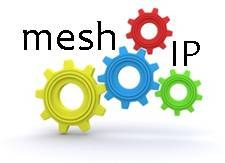 Gartner forecasts double-digit strong growth in revenue for the enterprise SAAS applications market in 2010 and 2011.
Gartner forecasts double-digit strong growth in revenue for the enterprise SAAS applications market in 2010 and 2011.
Software-as-a-service worldwide revenues for enterprise applications will reach $10.7 billion in 2011, said Gartner on Dec. 14.
The market generated worldwide revenues of $7.9 billion in 2009, and is forecast to reach $9.2 billion for 2010, according to the analyst firm. While growth was strong for 2010, with a 15.7 percent jump over 2009 revenues, “the market is projected for stronger growth in 2011,” with a 16.2 percent increase over 2010, Gartner said.
The “significant industry buzz” surrounding SAAS and other off-premises models has “shifted” to cloud computing, according to the report. Gartner analysts estimated that 75 percent of the “current” SAAS delivery revenue could be considered cloud services. As the “SAAS model matures and converges with cloud services models,” the breakdown could exceed 90 percent by 2014, the analysts said.
The challenge is to be able to clearly identify SAAS from all other off-premise products. Since SAAS and cloud are “hot concepts,” many suppliers are rebranding their hosting, application management, or application outsourcing capabilities as SAAS or are claiming their solutions are “in the cloud,” said Sharon Mertz, a research director at Gartner.
“Suppliers run the risk of confusing and antagonizing buyers if they persist in this approach,” said Mertz. Enterprises run the risk of “getting nasty shocks” when they realize what they bought is not SAAS, she said.
Mertz defined SAAS as software owned, delivered and managed remotely by one or more providers. The application is delivered as a single set of common code and data definitions and contracted customers “consume” the application at anytime in a “one-to-many model,” according to the report.
There have been changes in how SAAS is sold, consumed and perceived by vendors and buyers, Gartner said. Executives and IT are getting involved in purchasing decisions as the deal sizes and deployments get bigger, covering “thousands to tens of thousands of users,” said Mertz.
Even so, IT is left out of most deals as an increasing number of companies are procuring and deploying SAAS applications from multiple vendors without involving IT, said Gartner. The variety of SAAS applications from multiple vendors within the enterprise creates management issues and challenges, said Gartner.
In fact, that is often a part of the SAAS-providers sales pitch, according to Brian Cleary, vice president of marketing at Aveksa, a producer of change management, compliance and application access governance for IT organizations. There is an “IT is bad” mentality and the providers would rather sell directly to the lines of business and not talk to IT, he said. As a result, IT has no visibility as to who is buying external applications, what data is being stored there, and who has access to the application, Cleary said.
Content, communications and collaboration SAAS offerings continue to dominate the enterprise application market, with customer relationship management products close behind. Worldwide 2010 revenues are expected to hit $2.9 billion, and $2.6 billion respectively, said Mertz.
“Initial concerns about security, response time and service availability have diminished for many organizations,” said Mertz.
However, SAAS usage and adoption varies widely across market segments, according to Gartner. SAAS is “barely used” for enterprise content management and search, but is the “predominant form” for Web conferencing, according to the report. While SAAS is an “attractive alternative” to on-premises solutions for sales force automation, buyers are concerned about e-commerce because of integration challenges with on-premises applications and uncertainty over who owns the data, according to the report.
There is a “higher requirement for downstream integration” as SAAS offerings become integrated with other applications and business processes within the enterprise, Mertz said.
- The Customer Edge Drives the Need for NaaS - June 25, 2023
- Blockchain Evolves And Secures - January 13, 2019
- Bessemer Ventures’ 2018 Cloud Computing Trends - February 25, 2018




